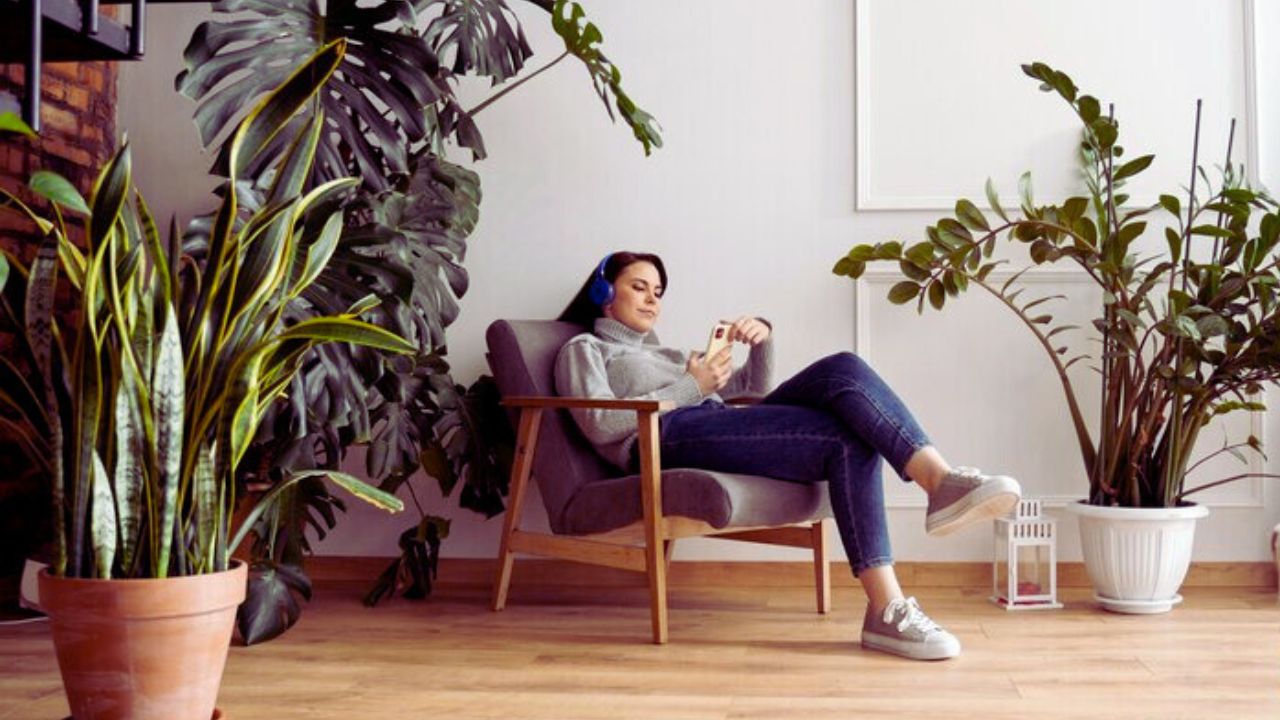In an era where environmental sustainability is becoming increasingly important, homeowners are exploring eco-friendly alternatives for their living spaces. One significant area where you can make a green choice is flooring.
According to statistics, 60% to 70% of homes in the U.S. contain carpeting made from nylon, polyester, or vinyl—materials that depend heavily on non-renewable fossil fuels.
With growing concerns about deforestation, air quality, and overflowing landfills, it’s no surprise that interest in eco-friendly flooring options is rising.
Whether you’re committed to green living, concerned about health issues, or simply looking for quality products at a reasonable price, here are five eco-friendly flooring options.
1. Bamboo: The Green Giant of Flooring
Why Choose Bamboo?
Bamboo is a top eco-friendly flooring choice due to its rapid growth and renewability. Unlike traditional hardwoods, which can take 25 to 125 years to mature, bamboo matures in just 3 to 5 years.
This makes it a highly sustainable option for flooring. Bamboo is a grass that grows abundantly in tropical climates, and it regenerates quickly after harvesting, which helps prevent soil erosion and deforestation.
Durability and Aesthetics
Despite being a type of grass, bamboo has a hardness rating similar to hardwoods like red or white oak.
It typically receives a 1350 rating on the Janka hardness test, but specific manufacturing techniques can enhance its hardness to nearly 3000, surpassing even rock maple, hickory, and Brazilian cherry.
Bamboo’s ability to take on various low-VOC stains and sealers makes it versatile enough to match any decor style. Its natural grain and color variations add a unique and elegant touch to any room.
Environmental Impact
Bamboo’s rapid growth cycle and minimal environmental impact make it an excellent choice for eco-conscious homeowners. It’s also biodegradable, contributing to reduced waste in landfills.
Moreover, bamboo plantations help absorb more carbon dioxide and produce more oxygen compared to an equivalent stand of hardwood trees, making bamboo a positive environmental contributor.
2. Cork: Soft, Sustainable, and Stylish
Why Choose Cork?
Cork flooring is made from the bark of cork oak trees, which regenerate their bark every 8 to 10 years, making it a renewable resource.
This sustainable harvesting process does not harm the trees, ensuring they continue to thrive and absorb carbon dioxide. Cork is sourced primarily from Mediterranean regions, with Portugal being the largest producer.
Comfort and Insulation
Cork is known for its softness and warmth underfoot, providing a comfortable surface as a natural insulator. This makes it an ideal choice for living areas and bedrooms.
Its natural cellular structure gives cork its cushioning effect, making it easier on the joints and reducing noise levels.
Durability and Maintenance
Cork flooring is resistant to mold, mildew, and termites, which adds to its longevity. It’s also hypoallergenic and easy to maintain, requiring simple cleaning with a damp mop and mild detergent.
Some cork flooring products are made from post-industrial recycled materials, enhancing their eco-friendly credentials. Properly maintained cork flooring can last for decades, making it a wise investment.
3. Linoleum: A Classic with a Green Twist
Why Choose Linoleum?
Often confused with vinyl, true linoleum is made from natural materials like linseed oil, wood flour, and resins. It’s 100% biodegradable and produces no harmful toxins, making it a greener alternative to PVC-based products. Linoleum was first invented in the 19th century and has been a durable, eco-friendly flooring option ever since.
Health Benefits
Linoleum is an excellent choice for those with allergies or asthma, as it doesn’t emit harmful VOCs (Volatile Organic Compounds).
Its natural antibacterial properties also contribute to a healthier indoor environment. Linoleum is naturally antistatic, reducing dust and allergen buildup.
Durability and Style
Modern linoleum comes in various colors and patterns, far removed from the dull designs of the past. It’s durable and can withstand heavy foot traffic, making it suitable for residential and commercial spaces.
Properly installed and maintained, linoleum flooring can last up to 40 years, providing a long-lasting, eco-friendly option.
4. Wool Carpeting: Natural Luxury Underfoot
Why Choose Wool?
Wool carpeting, especially from New Zealand sheep, offers a sustainable and luxurious flooring option.
Wool is naturally stain-resistant and has excellent dyeing properties, producing vibrant hues and pastel colors. Wool fibers are naturally crimped, which helps them retain their shape and provide a plush, comfortable feel underfoot.
Environmental Impact
Wool is a renewable resource, and its production has a lower environmental impact than synthetic fibers. It’s also biodegradable, reducing its footprint once it’s time for replacement. Wool production supports sustainable farming practices and contributes to rural economies.
Health Benefits
Wool’s natural resistance to dust mites and ability to absorb indoor air pollutants contribute to better indoor air quality. It’s also hypoallergenic, making it a good choice for households with allergies.
Additionally, wool’s natural insulating properties help regulate indoor temperatures, contributing to energy savings.
5. Recycled and Renewable Fiber Carpeting
Why Choose Renewable Fiber Carpeting?
Carpeting made from renewable fibers like corn offers a LEED-certified, eco-friendly option. These carpets are soft, strong, and highly stain-resistant, often requiring only water for cleaning, eliminating the need for harsh chemical cleaners. Renewable fiber carpets are produced using sustainable practices that minimize their environmental impact.
Sustainability and Performance
Renewable fiber carpets contribute to reducing landfill waste and are often made using environmentally responsible manufacturing processes.
They offer high performance and durability, making them a practical choice for busy households. Some renewable fiber carpets are made from recycled materials, enhancing their eco-friendly attributes.
Health and Safety
These carpets are free from harmful chemicals and contribute to healthier indoor air quality. Their ease of maintenance with water also means fewer chemical residues in your living environment. Renewable fiber carpets are also hypoallergenic, making them suitable for homes with allergy sufferers.
Why Choose Eco-Friendly Flooring?
Reducing Waste and Environmental Impact
Opting for eco-friendly flooring helps reduce the amount of waste going to landfills. Sustainable materials like bamboo, cork, and recycled fibers are designed to have a minimal environmental impact in their production and disposal stages. Choosing these materials helps decrease the demand for non-renewable resources and supports the circular economy.
Improving Indoor Air Quality
Many traditional flooring options emit harmful VOCs due to the adhesives and finishes used. Eco-friendly flooring materials are often free from these toxic chemicals, contributing to healthier indoor air quality and reducing the risk of respiratory issues. Improved indoor air quality can significantly impact the overall health and well-being of the occupants.
Supporting Sustainable Practices
Choosing eco-friendly flooring supports sustainable harvesting and manufacturing practices. This reduces the demand for non-renewable resources and promotes the preservation of natural habitats and biodiversity. Supporting companies prioritizing sustainability can also drive industry-wide changes toward more environmentally responsible practices.
Economic Benefits
While eco-friendly flooring options can sometimes have a higher upfront cost, their durability and low maintenance requirements often lead to cost savings over time. Additionally, many eco-friendly products are becoming more competitively priced as demand and production increase. Investing in sustainable flooring can also increase the value of your property, as eco-conscious buyers are willing to pay a premium for green features.
Final thoughts
Eco-friendly flooring options offer a sustainable and health-conscious alternative to traditional flooring materials. Whether you choose bamboo, cork, linoleum, wool, or renewable fiber carpeting, each option provides unique benefits to a greener home.
By making environmentally responsible choices, you can enjoy beautiful, durable flooring that supports your family’s and the planet’s health. Choosing eco-friendly flooring is a step towards a more sustainable future, demonstrating a commitment to environmental stewardship and responsible living.




































